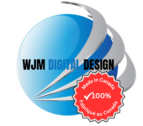Web Design as Architecture versus Web Design as Storytelling: Making Informed Choices for Your First Website
Introduction
Creating a website is a monumental step for any new business or personal brand. But before diving into colors and fonts, it’s essential to understand the foundational approach to your design. Should your website function like a meticulously structured building or unfold like an engaging narrative? Let’s break it down.
Choosing the right approach influences not only how users interact with your site but also how they perceive your brand. This decision affects everything from layout and navigation to content presentation and emotional resonance. Let’s explore each philosophy in greater detail.
Web Design as Architecture
This approach treats web design like urban planning — organizing content and interactions with precision and clarity. It ensures users can easily find what they’re looking for, much like how a well-designed building guides visitors through its spaces.
Pros:
- Clear structure and navigation: Helps users intuitively understand where to go, reducing frustration and bounce rates.
- Logical flow for users: Content is organized hierarchically, which aids in comprehension and decision-making.
- Easier scalability for future growth: As your business evolves, adding new pages or features is more straightforward.
Cons:
- Can feel rigid or impersonal: Overly structured designs may lack warmth or creativity.
- May prioritize functionality over emotional connection: A hyper-efficient design might miss opportunities to build a personal bond with users.
Web Design as Storytelling
This philosophy brings websites to life, treating the user’s journey as a narrative unfolding across pages. It’s about crafting an experience that evokes emotions and immerses visitors in your brand’s story.
Pros:
- Engages visitors emotionally: A strong narrative can captivate users, making them more invested in your brand.
- Builds brand identity through narrative: Storytelling helps communicate your values, mission, and personality.
- Can create a memorable user experience: An emotional connection makes your site stand out, encouraging repeat visits and word-of-mouth referrals.
Cons:
- Risk of losing clarity in structure: A story-driven approach can sometimes sacrifice ease of navigation.
- Might not suit all business types: Not every brand benefits equally from storytelling; for example, a technical support site may need more structure than flair.
The Fusion Approach
Combining both philosophies can create a powerful synergy. For instance, a well-structured layout can support immersive storytelling elements, while narrative elements can humanize an otherwise rigid design. A fusion approach leverages the strengths of both worlds, balancing logic with emotion.
Tips for Fusion:
- Use storytelling for brand pages, structure for service pages: Let your homepage and ‘About’ section tell your story, while product or service pages stay straightforward.
- Blend compelling visuals with intuitive navigation: Use striking images, videos, or animations to enhance storytelling, but maintain a clear menu and navigation bar.
- Test user responses to refine the balance: Collect feedback or conduct A/B testing to see how visitors engage with each element, then tweak accordingly.
Real-World Examples
- Apple: Their website blends sleek, architectural design with product storytelling, using visuals and animations to immerse users in the brand narrative.
- Airbnb: A balance of structured listings with user-generated travel stories creates a harmonious blend of function and emotion.
Conclusion
For first-time website owners, understanding these approaches empowers you to make informed design choices. Whether you lean toward architecture, storytelling, or a fusion of both, the key is aligning your design with your brand goals and audience needs. Think carefully about the message you want to convey and the experience you want to provide — your website is more than just a digital space; it’s a reflection of your vision.


